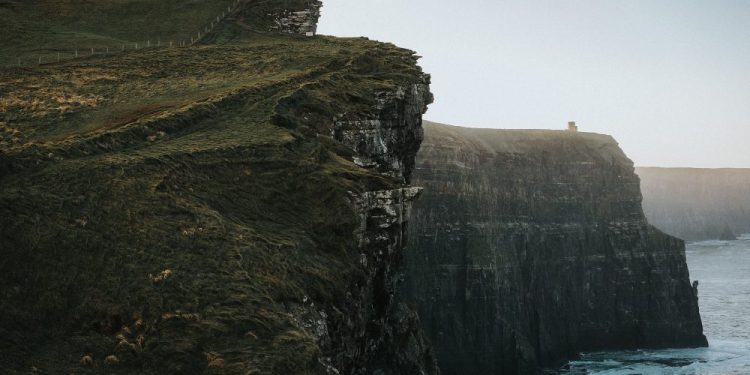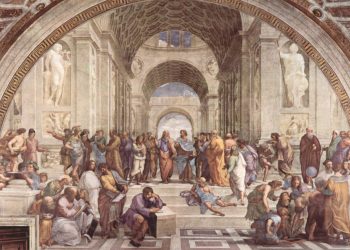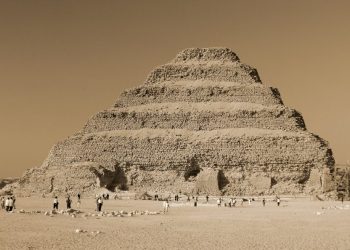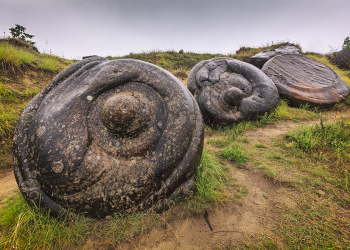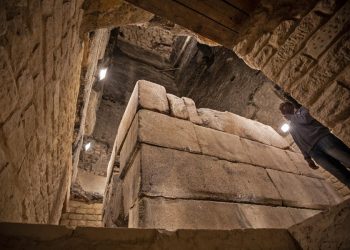“Tír gan teanga, tír gan anam. A country without a language is a country without a soul.”
Even though Ireland shares her beauty with the world, she also possesses more mysterious things than one could imagine. So, let’s buckle up and check some of the spooky sites in Ireland.
Fairy Trees
While roaming through Irish fields and bogs, you might run into Hawthorn Tree in the middle of the field. These bushy trees are known to be home to Irish fairies, and it’s known that landowners will not cut off that tree from the field. If you talk to Irish lads, they will tell you fairies use this tree as a passage from our world to their realm.
If you run into this tree, make sure you give it a good look, and you might see a beautiful Irish Fairy.
The Burren
In County Clare, be sure to talk to locals and ask them about the Poulnabrone Dolmen. These ancient portal tombs lie on a limestone plateau scattered around with other ancient tombs looking like a portal to another world. These tombs are some of the finest and oldest examples of megalithic monuments in Ireland.
History says that the tomb is between 5200 – 5800 years old. Famous archaeologist Ann Lynch revealed the remains of 21 people stating that people use the tomb for 600 years.
The Hill of Tara
Located in County Meath, the Hill of Tara is an ancient mound of Celtic High Kings, as history would say. But the site hides more mystery under her sleeve.
Tara is a hill, ancient ceremonial and burial site.
You will find numerous earthworks and monuments from the Neolithic age around it.
Tara is known for being a very important site throughout history. For example, the oldest visible monument at the site, known as “Mound of the Hostages,” is believed to be more than 5,000 years old.
Locals believe that gods used to dwell there and that the site was a kind of entrance to another realm, home to eternal joy.
Looking from above, the Hill of Tara almost looks as if the ancients had left a carved message for the gods.
Stone Circles–Druids Altar
All over Ireland, you will find stones popping out of the ground. In fact, you’ll find similar stones across the world. The most famous in Ireland is the one in County Cork. Drombeg Stone Circle, also known as Druids Altar, contains 17 stones forming a perfect circle.
Although their exact purpose remains an enigma, it is believed that one of the megaliths is aligned with the winter solstice, the reason why some believe the stone circles may have been used as astronomical observatories.
Excavation from the early 1900s at Druids Altar found an inverted pot containing a young person wrapped in thick cloth, which is why some theories suggest similar sites were also used as burial grounds.
The Rock of Cashel
Golden Vale, located in County Tipperary, holds a pearl of history called Rock of Cashel. Known as St. Patrick Rock, legend says it was St. Patrick who banished the Devil from Cashel. The Devil took a bite of a nearby mountain—known as Devils Bit—and dropped the piece back into Cashel.
This castle was a seat for Kings of Munster for several hundred years before the Norman invasion. King Muircheartach Ua Briain donated this fortress to the church in 1101.
Newgrange
Five thousand years old cluster of the Stone Age containing passage tombs builds 3200 BC. It is located in County Meath.
Newgrange is older than Stonehenge and the pyramids of Egypt.
To this day, experts continue debating the purpose of Newgrange, but there is evidence of religious significance. Some archeologists believe it was a burial mound of ancient Kings of Tara. During Winter Solstice, sunshine hits directly to align a passage of the monument, lighting the inner chamber and carvings on the wall.
Giant’s Causeway
Up in Northern Ireland, County Antrim gives a glimpse of real giant’s work. Legend says that giant Fionn mac Cumhaill built the Causeway when he was challenged to fight the Scottish giant Benandonner. After he accepted the challenge, he made a Causeway to meet the Scottish giant.
One version of the story says Fionn defeats Benandonner. Other versions say Fionn hides when he sees how big Benandonner was. While looking for Fionn, Benandonner finds Fionn’s wife, Oonagh, with a baby. This baby was Fionn dressed up as a baby in a cradle.
After seeing how big the baby is, Benandonner runs back to Scotland, and on his way back, he destroys the rest of the Causeway connecting Northern Way to Scotland, never to face Fionn again.
Carrowmore
The largest megalithic graveyard in Ireland holds many secrets to this day. Carrowmore’s view goes beyond the horizon. From here, you can see the famous Knockarea, known as the burial tomb of Queen Maebh of Connacht from Celtic mythology.
Even though Knockarea has still not been fully excavated, the climb to the top is steep and challenging, but its views will give you a reason to believe in ancient Celtic mythology.
Skellig Michael
Located west of Iveragh Peninsula, in County Kerry, Skellig Micheal got a name from archangel Micheal, and Skellig comes from the Irish word Sceilig, meaning Splinter of Stone.
This beautiful gem of Emerald Isle’s first reference was made around 1400 BC when a shipwreck occurred on its rocks caused by Tuatha Dé Danann, supernatural beings know from Irish mythology. Island was inhabitable until Augustinian monks didn’t decide to build their monastery on the Island.
The monastery is built into a terraced shelf 180 meters above sea level. It contains two oratories, a cemetery, crosses, cross-slabs, six clochán-type domed beehive cells (of which one has fallen), and a medieval church.
Shannon Pot
The longest Irish river has its own tales from history. Built by running water from Irish mountain streams, legend says that Sionnan, who was the granddaughter of the Celtic god of the sea, Lir, was fishing there one day and caught the Salmon of Wisdom.
The Salmon decided to raise the water level, and Sionnan has drowned into the river, giving the river its name.
Another myth says that Sionnan was eating the forbidden fruit from the Tree of Knowledge, which was planted by druids. With every bite, the water level rose until it created a pool where she drowned, making water flow down the Emerald Isle forming River Shannon.
Join the discussion and participate in awesome giveaways in our mobile Telegram group. Join Curiosmos on Telegram Today. t.me/Curiosmos
All sources and references are linked throughout the article.



